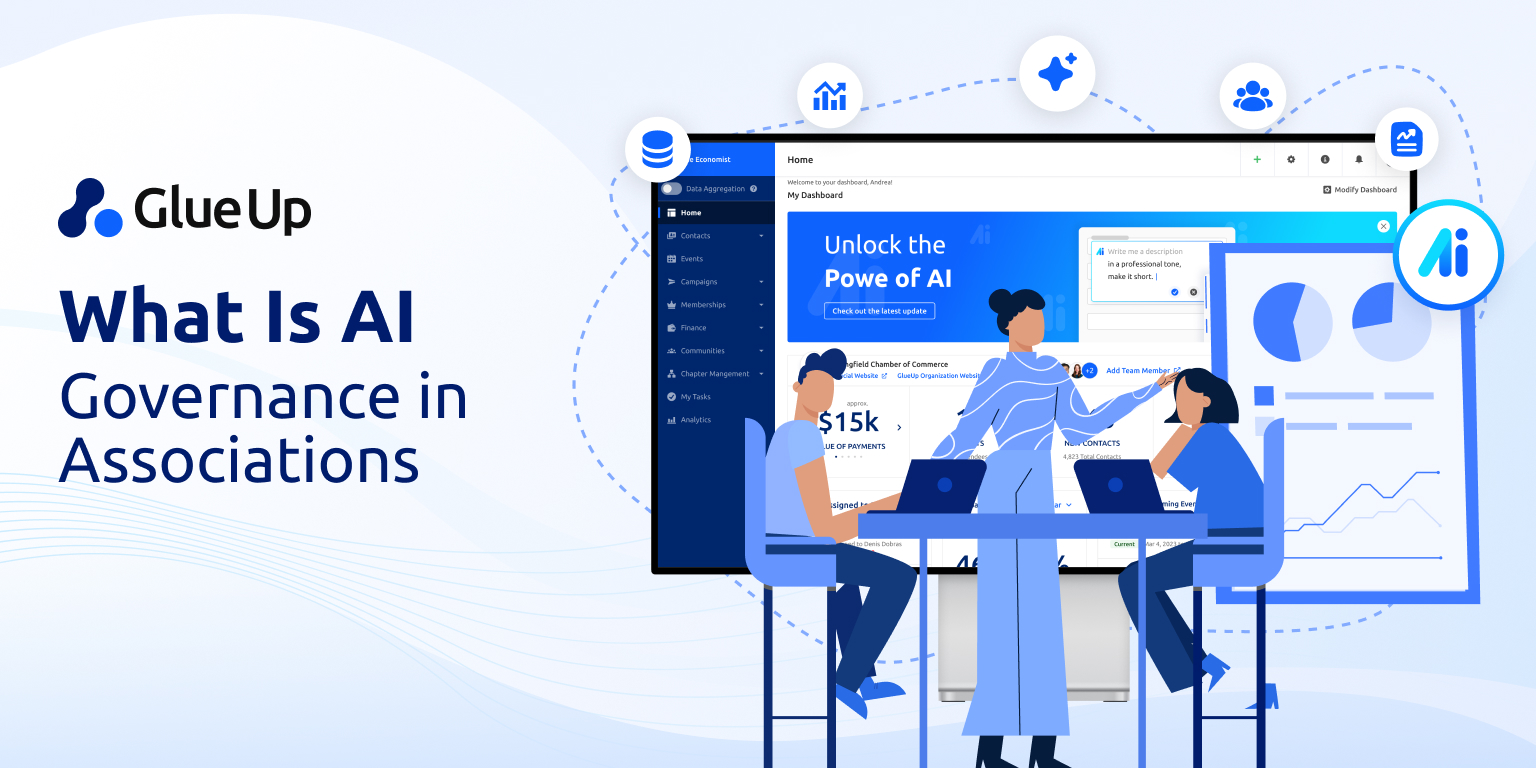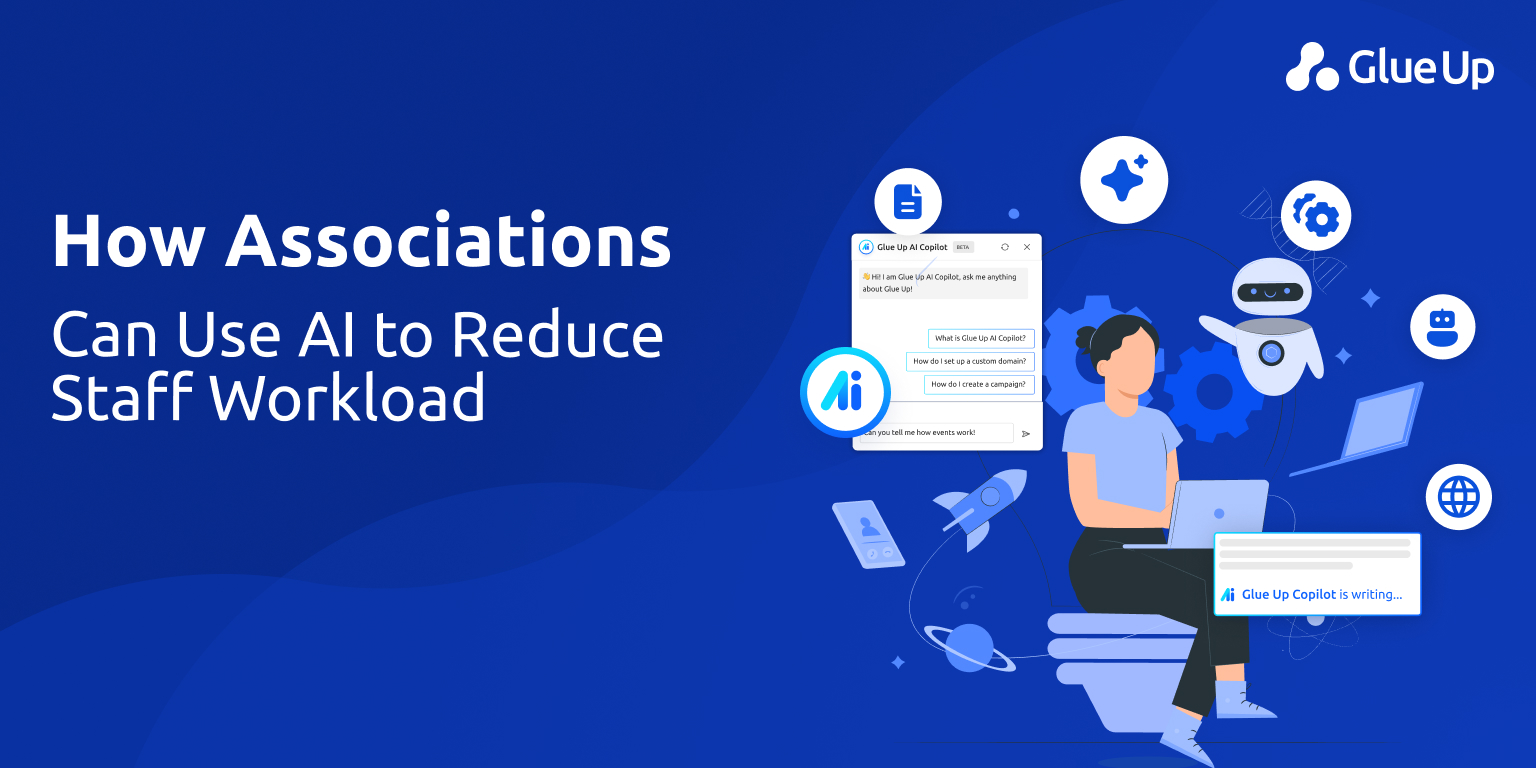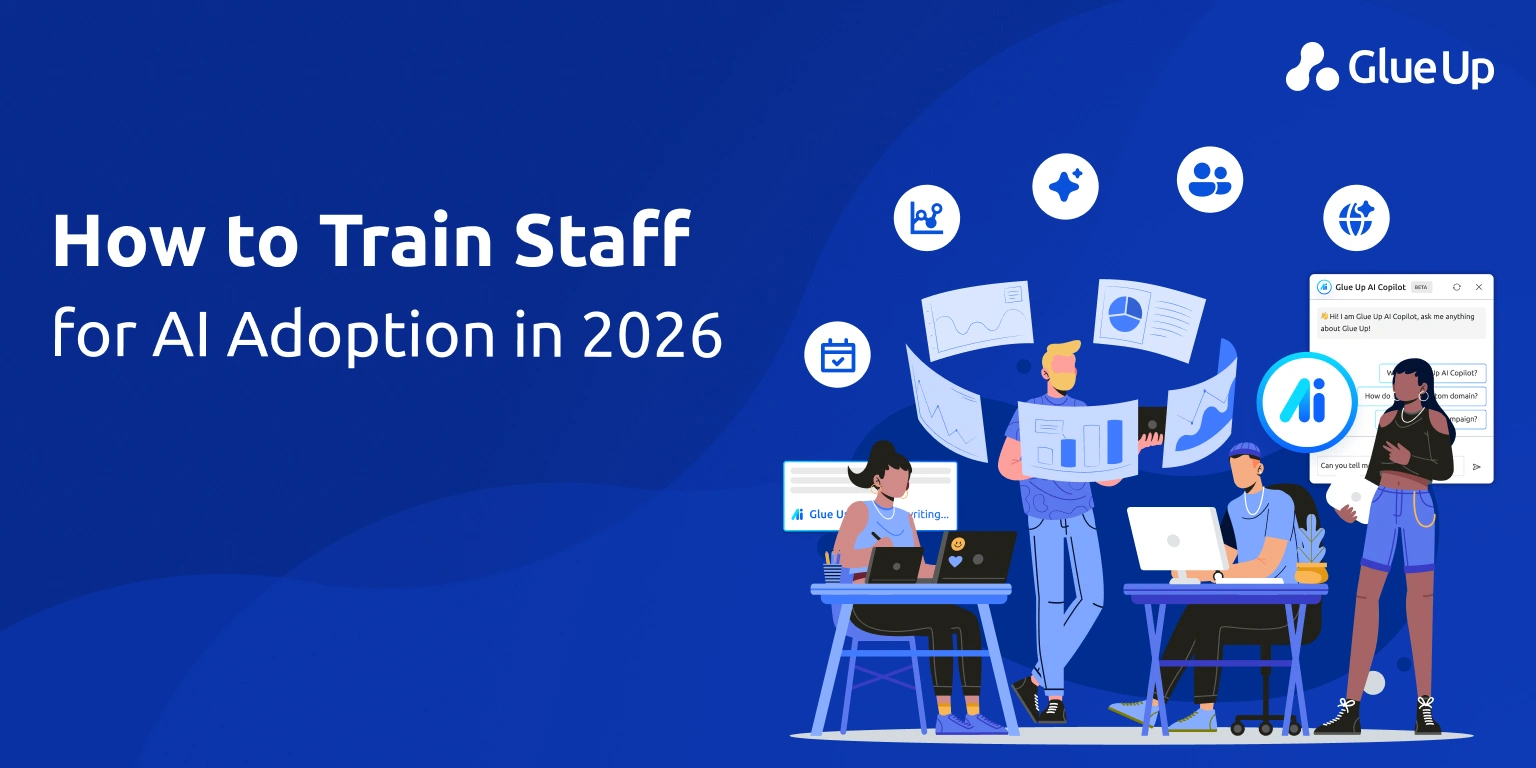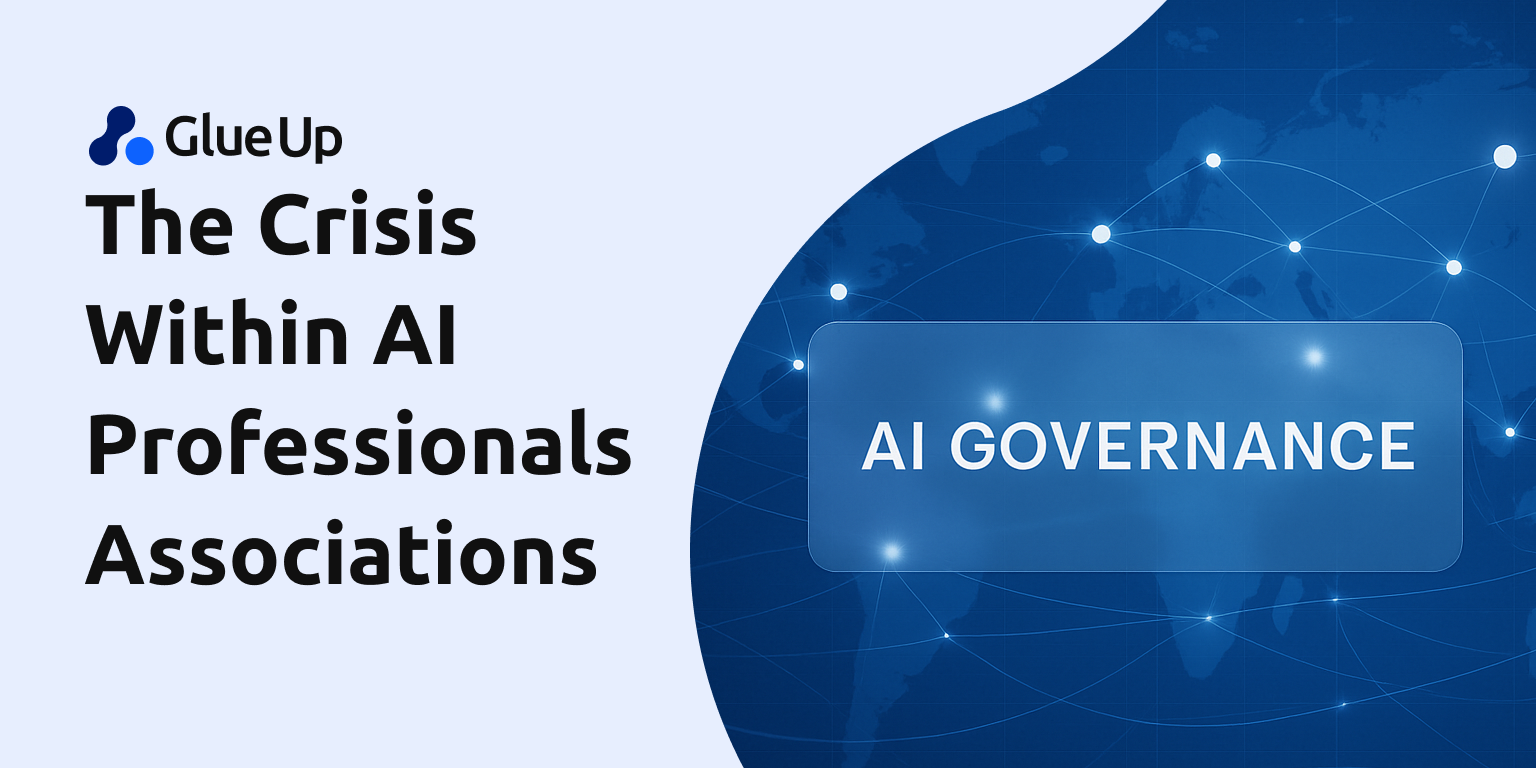
There was a time when the term AI governance sounded like an academic niche, something you’d hear in policy roundtables or think tanks. Fast forward to 2025, and it’s front and center in boardrooms, funding decks, and, more critically, in the halls of professional associations. There’s not enough talent to meet the demand. And that has created a cascading effect for AI professionals associations worldwide.
Associations are now expected to set governance standards, guide ethical adoption, and most urgently, help close the talent gap. Most AI professionals associations are struggling to meet at that moment because they lack infrastructure.
Why AI Governance Is No Longer Optional in 2025
In 2025, regulatory pressure is rising fast. The EU AI Act is real. The U.S. is ramping up state-level enforcement. APAC countries are rolling out data-centric AI policies. Associations that were once advisory in nature are now expected to be implementation partners, policy interpreters, and rapid-response educators.
AI professionals associations are caught in a bind: their members look to them for clarity, structure, and guidance, while governments and industries treat them as operational enablers. The role has changed. It’s about building infrastructure for responsible AI now.
This shift has made one thing clear: AI governance is a systemic redesign. And associations are now at the center of that redesign.
The New Workforce Dilemma
Let’s look at the numbers. According to the IAPP and Credo AI's 2025 Governance Report, 77% of organizations are actively developing AI governance programs, and nearly 90% of AI-adopting companies cite governance as a top-five strategic priority. But only 1.5% say they have sufficient staffing to meet that need.
Math doesn’t work. The World Economic Forum projects 97 million new roles will emerge due to AI, but most associations are still relying on overworked privacy officers, compliance managers, and part-time chapter heads to fill the gap. That’s like asking your building’s janitor to also write the fire code.
The keyword here is AI professionals association, because that’s who the world is turning to, hoping they’ll professionalize the AI space.
What Role AI Professionals Associations Are Playing
AI professionals associations are shaping the infrastructure of an emerging field. As regulation outpaces implementation, these associations are quietly building the scaffolding that will determine how AI governance plays out at scale.
Here’s what that looks like in practice:
Certifying governance leaders. The top associations have launched new credentialing tracks for legal, risk, and compliance professionals navigating AI’s gray areas.
Bridging disciplines. By partnering with ethicists, legal scholars, and policymakers, they’re turning vague principles into enforceable frameworks for AI risk mitigation.
Globalizing governance. International working groups now meet regularly across chapters to interpret, and influence emerging regulatory models, from the EU AI Act to evolving U.S. state-level policies.
Investing in infrastructure. Many associations are funding internal R&D to prototype tools that simulate ethical scenarios, test governance models, and visualize regulatory impact for their members.
This is creating knowledge and organizing it. And doing so across chapters, languages, jurisdictions, and time zones; often with a volunteer-based leadership structure and limited administrative support.
That’s where friction sets in.
Ambition Without Infrastructure Creates Drag
For all their momentum, AI professionals associations face a familiar operational bottleneck: outdated systems. Chapter leads are still piecing together member data from spreadsheets, managing renewals manually, and navigating a patchwork of legacy CRMs.
The paradox is clear: associations tasked with shaping AI’s future are often managing themselves in pre-digital ways.
To move at the pace policy demands, AI professionals associations need digital-first infrastructure, designed for distributed teams, multilingual collaboration, and AI-native workflows. The problem is capacity.
Chapter Management Under Pressure: The Unseen Constraint on AI Governance
As artificial intelligence reshapes industries and regulatory landscapes, AI professionals associations have emerged as key architects of ethical, legal, and operational standards. Yet their ability to influence the field increasingly depends on an overlooked element: the operational health of their chapters.
Chapters, by design, are where an association’s vision materializes into action. They conduct localized governance training, manage certification pipelines, organize regulatory workshops, and serve as the onboarding gateway for future AI compliance leaders. Without strong chapters, the larger association cannot sustain credibility or scale.
However, most chapters today are managing these complex, high-stakes responsibilities on infrastructures that were never designed for the demands of AI governance. Systems are outdated, fragmented, and incapable of delivering the operational consistency that global regulatory engagement now requires.
Several structural gaps are defining this crisis:
Disconnected systems undermine operational continuity. Membership databases, event registrations, and communications are often housed on separate platforms, creating inefficiencies and preventing a unified member experience.
Absence of real-time engagement data leaves leadership unable to measure program success or identify gaps in governance education across chapters.
Inconsistent onboarding practices result in wide variability in the readiness of governance-track professionals, threatening the credibility of certification programs.
Manual workflows for renewals, certifications, and regulatory updates create unnecessary administrative burdens, sapping chapter leaders’ limited capacity.
These deficiencies are not merely administrative inconveniences. They represent strategic vulnerabilities at a time when associations are being called to demonstrate leadership on some of the most sensitive and politically charged issues of the century.
The gap is not one of ambition. It is one of the infrastructures. Associations are being asked to operationalize AI governance globally while relying on tools and workflows built for an earlier, simpler era.
Unless associations rethink the systems supporting their chapters, the credibility they have worked so hard to build will erode because execution at scale will remain impossible.
Modernizing chapter management is foundational to maintaining influence, accelerating regulatory alignment, and ensuring that ethical governance keeps pace with technological innovation.
Rethinking Infrastructure: What AI-Ready Associations Are Building
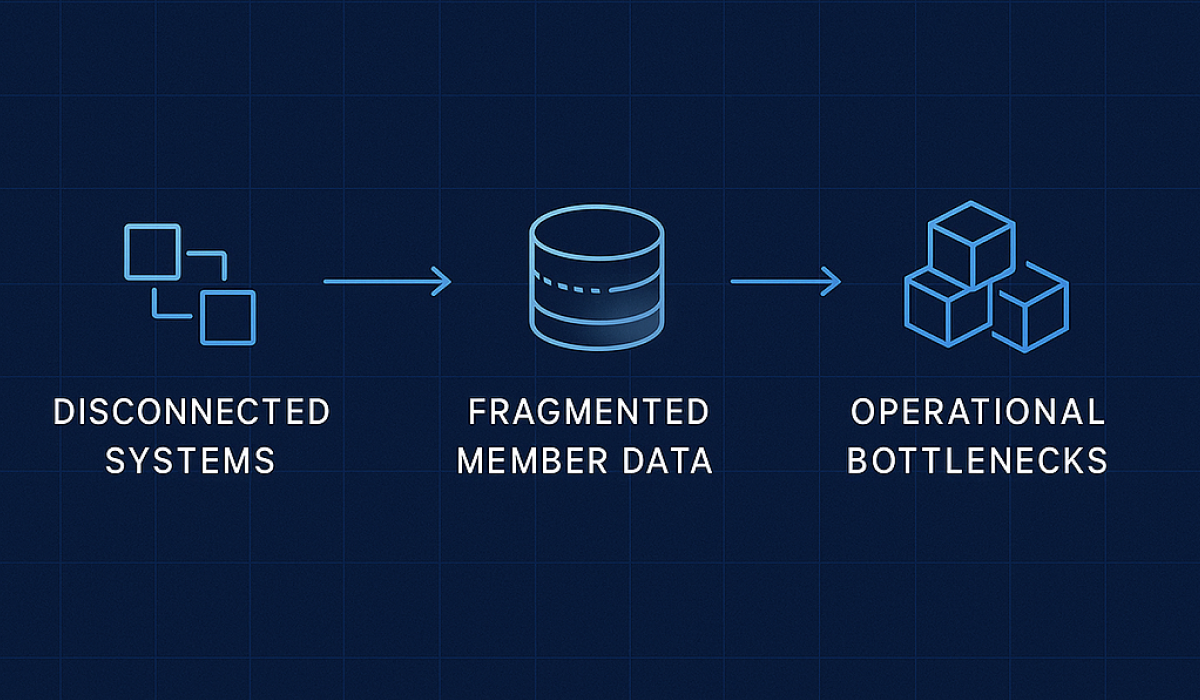
Associations positioned at the forefront of AI governance recognize that legacy infrastructure cannot support a global, fast-evolving mandate. They are beginning to invest in purpose-built systems designed specifically for the complexity of modern chapter operations.
Three critical shifts are defining the infrastructure of AI-ready associations:
1. Consolidation of Operational Systems into a Unified Platform
Rather than forcing chapters to navigate disconnected tools for membership management, event registration, certification tracking, and communications, leading associations are implementing integrated platforms. These systems create a single source of truth, enabling real-time visibility into chapter activities and member engagement across the entire organization.
2. Embedding Automation into Core Chapter Workflows
AI governance is an iterative, detail-intensive discipline. Modern associations are minimizing administrative overhead by automating processes such as membership renewals, certification renewals, compliance updates, and engagement scoring. Automation reduces manual errors, frees chapter leaders to focus on strategic initiatives, and ensures operational consistency across geographies.
3. Building Data-Driven Governance Ecosystems
Data is an operational asset. AI-ready associations are leveraging data on member behavior, training completion, certification outcomes, and event participation to refine programming, surface emerging governance challenges, and anticipate regulatory needs before they materialize.
These investments represent a shift from reactive administration to proactive governance architecture.
Associations that treat operational infrastructure as strategic infrastructure position themselves to keep pace with regulatory change and influence it.
The alternative, allowing chapters to operate in silos with inconsistent practices and outdated tools, risks undermining the entire premise of professional leadership in AI governance.
In a domain where credibility is both fragile and non-negotiable, the systems behind the scenes matter as much as the policies on paper.
The Operational Imperative: Investing in Infrastructure to Sustain Influence
AI professionals associations stand at a pivotal crossroads. Their missions, to steward ethical standards, shape policy, and build a future workforce equipped for AI governance, have never been more urgent. Yet ambition without operational capacity will not scale.
The credibility of these associations will increasingly depend not only on the intellectual leadership they provide, but on the operational systems that enable that leadership to reach and mobilize a global community.
Investment in chapter infrastructure is a strategic imperative.
The associations that will define the next decade of AI governance will not be the ones with the boldest mission statements alone. They will be the ones capable of executing consistently across chapters, time zones, and regulatory environments; with digital infrastructure built to anticipate complexity rather than react to it.
The cost of inaction is steep: slower regulatory influence, fragmented member engagement, eroded public trust, and missed opportunities to professionalize the field at scale.
In a world where technology evolves faster than regulation can adapt, operational excellence is not a support function. It is leadership. And for AI professionals associations, the future will belong to those who recognize infrastructure not as a background concern, but as a core strategic asset.
How Glue Up Bridges the Gap Between Ambition and Execution
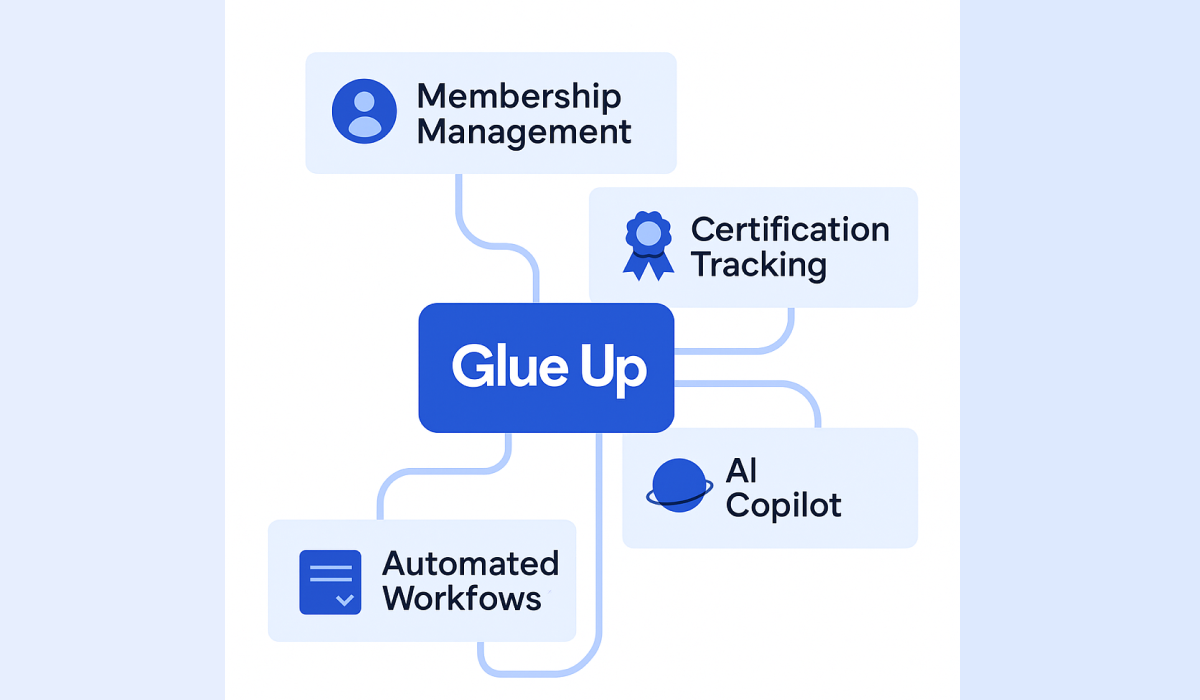
Solving the infrastructure challenge requires more than marginal improvements. It requires systems specifically designed for the realities of distributed governance, regulatory complexity, and member engagement at scale.
This is where Glue Up comes in.
Glue Up is the first global, AI-powered association management cloud, purpose-built for organizations shaping fields like AI governance, compliance, and ethical standards.
For AI professionals associations facing operational drag, Glue Up offers infrastructure calibrated to their strategic demands:
Automated workflows manage chapter registrations, event reminders, certification renewals, and compliance updates; reducing administrative friction and freeing chapter leaders to focus on substantive work.
Behavior-based segmentation provides real-time visibility into member engagement, training progression, and credential status, allowing leadership to identify emerging gaps before they widen.
Engagement scoring and retention forecasting transform chapter planning from reactive to proactive, empowering organizations to sustain member involvement and deliver on their mission more predictably.
AI Copilot functionality assists administrators in drafting communications, tracking complex member data, and surfacing compliance risks; lowering the cognitive load on chapter leadership teams.
This is a operational reality.
Associations leveraging Glue Up have already documented measurable improvements:
Reducing administrative hours
Increasing member retention
Accelerating the deployment of governance programs across multiple continents
Most importantly, they are shifting the role of chapter leadership, from resource-constrained volunteerism to professional, data-informed stewardship.
At a time when credibility and operational excellence are inseparable, Glue Up provides more than software. It provides the infrastructure that associations need to meet their mandates, scale their impact, and maintain strategic relevance in a world increasingly defined by AI.
What Associations Need to Do Next
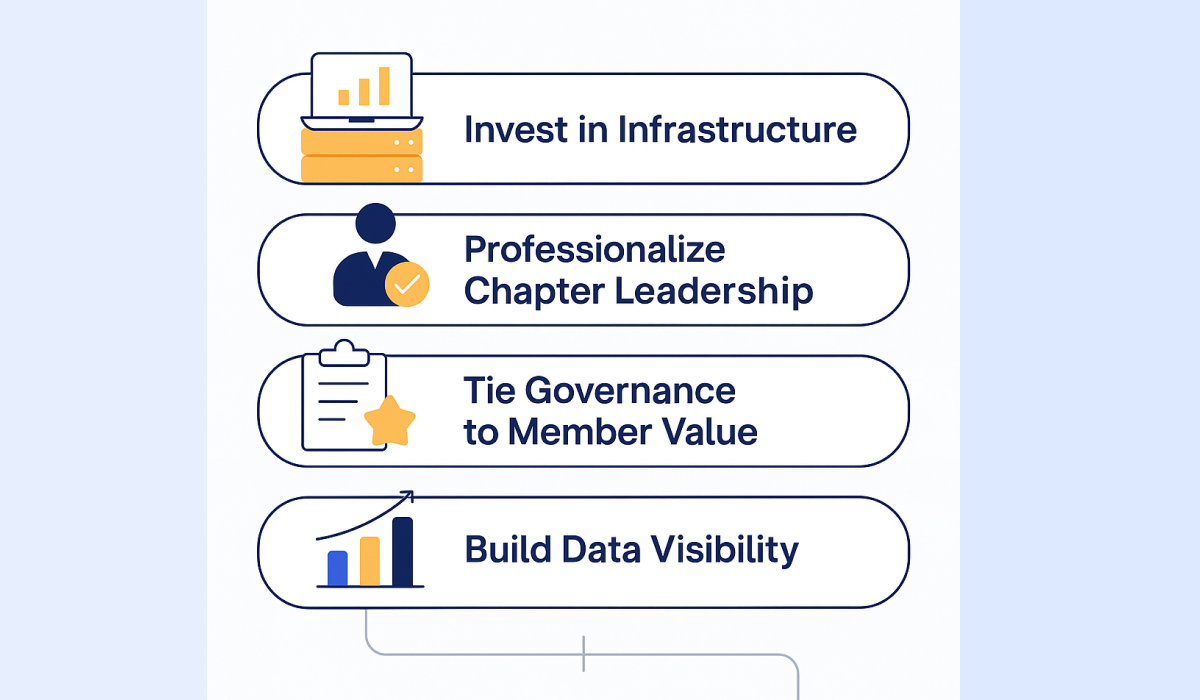
The pressure on AI professionals associations will not subside. If anything, it will intensify as regulations evolve, public scrutiny deepens, and the operational expectations on governance bodies rise.
This moment, then, is rearchitecting the foundations of professional governance for the AI era.
Four priorities are emerging as critical for associations seeking to sustain influence and scale impact:
1. Invest in Digital Infrastructure
Operational excellence begins with unified systems. Associations must adopt integrated platforms, such as Glue Up, that centralize chapter operations, enable real-time tracking of member engagement and certifications, and automate administrative workflows. Infrastructure must evolve from an afterthought to a strategic differentiator.
2. Professionalize the Role of Chapter Leadership
Chapters are not side projects; they are frontline governance bodies. Associations must equip chapter leaders with the same caliber of tools, training, and operational autonomy expected of early-stage startup founders. Professionalizing these roles is essential for ensuring consistency, accountability, and resilience.
3. Tie Governance Initiatives Directly to Member Value
Compliance alone will not sustain engagement. Associations must demonstrate how strong AI governance enhances member reputation, opens professional opportunities, and builds influence in emerging regulatory landscapes. Governance must be positioned not as obligation, but as strategic advantage.
4. Build Data Visibility into Every Operational Layer
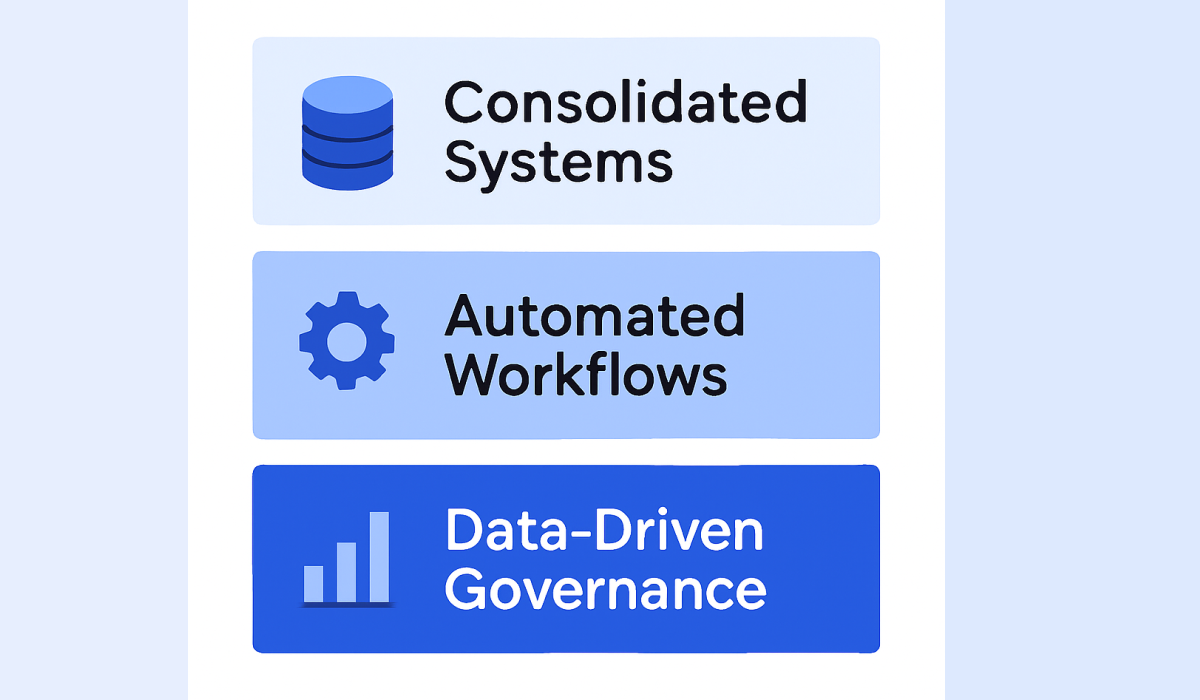
Scalability requires measurability. Associations must ensure that every chapter activity is trackable and reportable. Data transparency enables strategic adjustments, resource optimization, and the ability to demonstrate governance outcomes to stakeholders.
Above all, associations must recognize that waiting is not a neutral decision. The perfect time to modernize governance infrastructure was yesterday. The second-best time is now.
Associations that act decisively will maintain relevance and shape the standards by which the next decade of AI governance is measured.
Professionalizing AI Governance Begins with Operational Design
AI governance is entering a decisive phase. Associations will either extend their influence by operationalizing effectively or risk credibility by falling behind.
The world needs governance frameworks that can scale. Members demand tangible value from their affiliations. Professionals require infrastructure that allows them to deliver both.
The associations that succeed in 2025 and beyond will be the ones that operationalize with precision, treating execution with the same rigor as policy.
Glue Up delivers the operational architecture modern AI governance demands, unifying compliance management, certification tracking, chapter operations, and member engagement into a single AI-powered system.
Built for associations navigating complexity, Glue Up is a strategic partner, equipping professional communities with the infrastructure to scale governance, support chapters, and sustain influence across a rapidly changing regulatory landscape.
The real question is not whether your association understands the stakes. The real question is whether your association is built to lead.
Book a demo today and see how Glue Up’s AI-powered infrastructure equips your chapters to deliver on the future of responsible AI governance.

